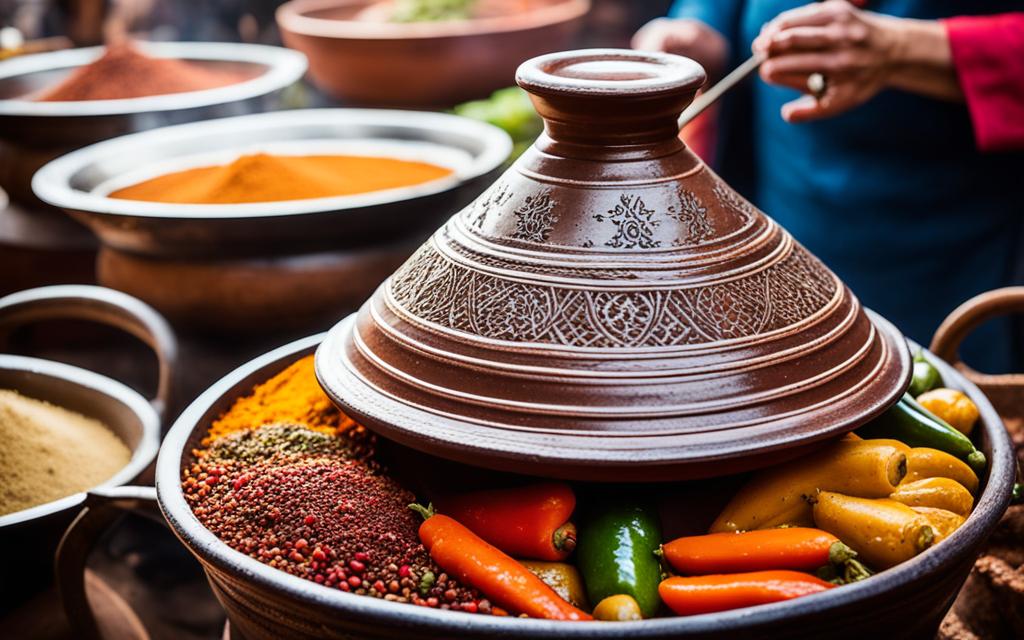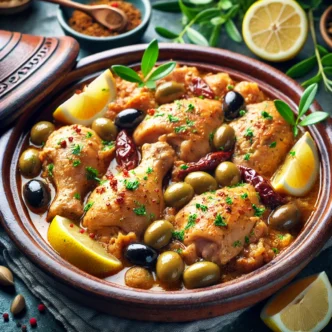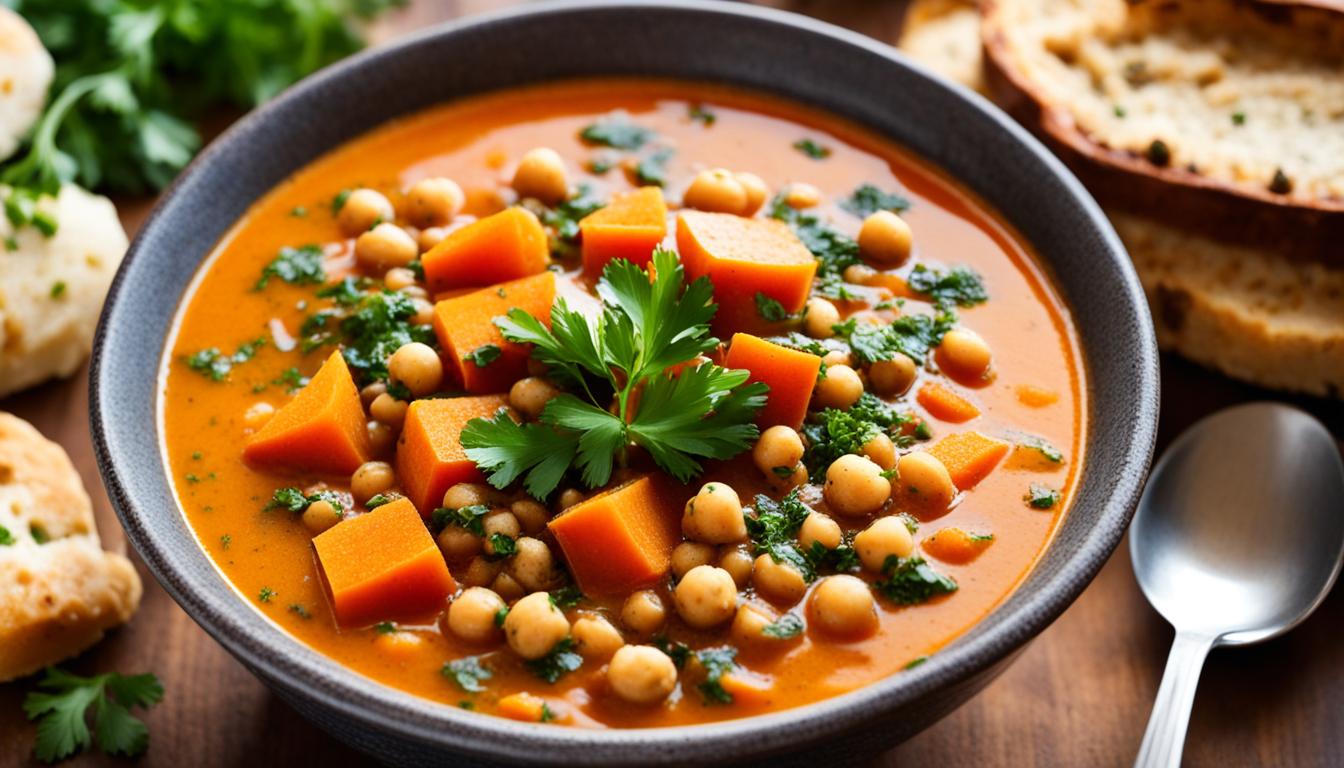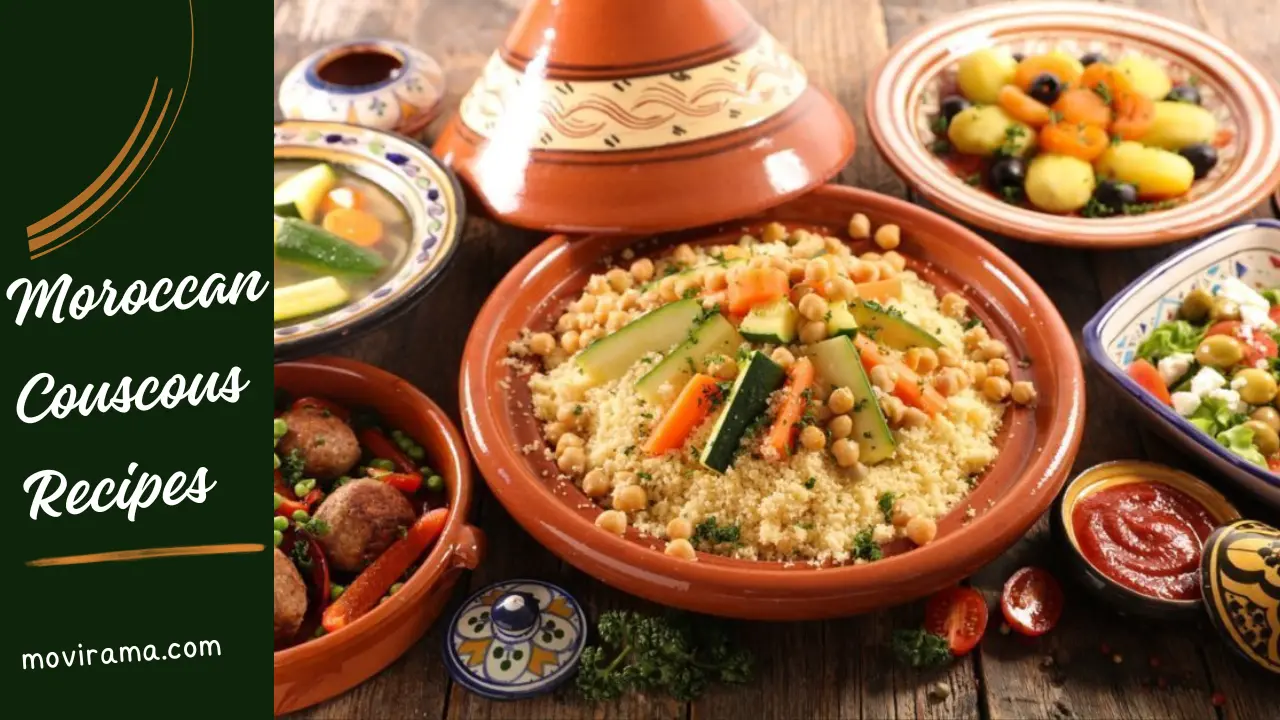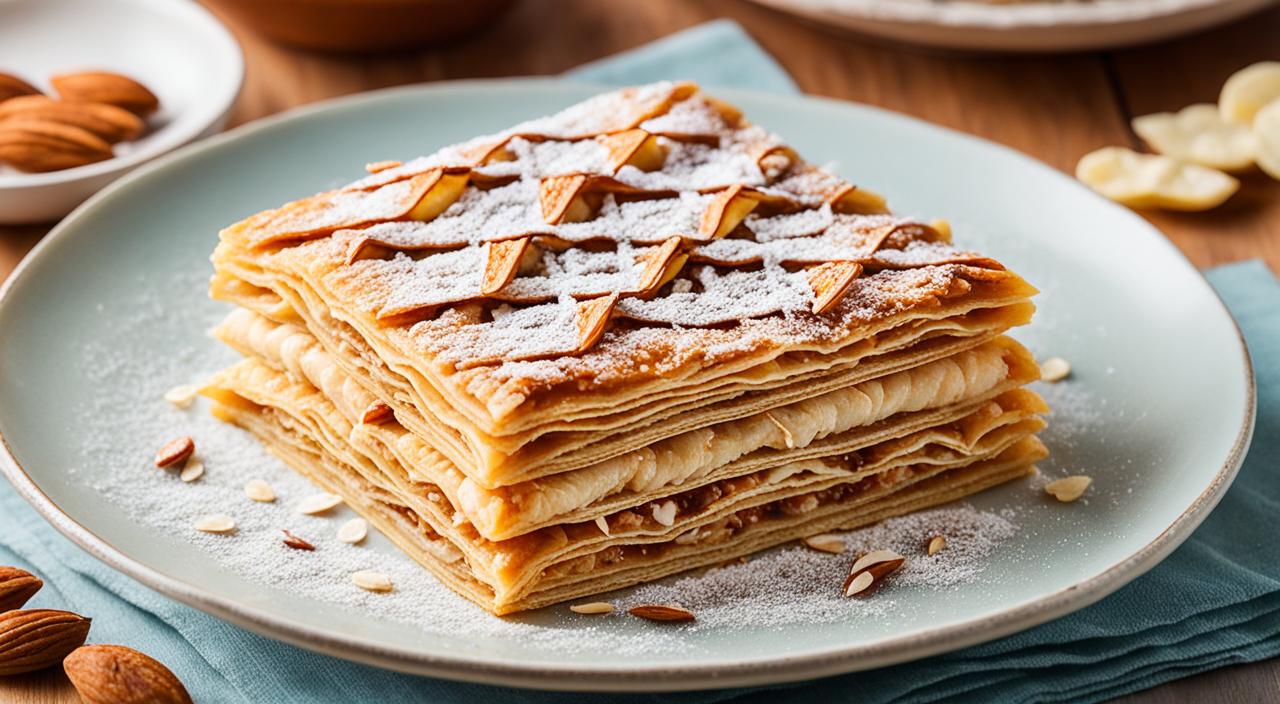Authentic Moroccan Tajine
Imagine a sluggish stew full of uncommon North African cooking. This is Moroccan Tajine, a dish cherished around the world. It’s recognized for its unique flavor and rich history. Let’s explore the secrets and techniques of this iconic dish together.
Ever wonder what makes Moroccan Tajine special? It’s now not only a stew. It’s a journey into the Moroccan lifestyle, packed with spices and flavors. Get geared up to visit Morocco’s vibrant markets and homes, where food is a party.
Key Takeaways
- Discover the rich records and cultural importance of Moroccan Tajine, a preferred gradual-cooked stew.
- Explore the essential elements and cooking strategies that define authentic Moroccan tajine recipes.
- Learn about the conventional clay tagine pot and present-day alternatives for the proper Moroccan dish.
- Uncover several tajine recipes, from pork and hen to lamb and vegetarian options.
- Discover Moroccan Tajine’s flexibility and how it can seamlessly integrate into your culinary repertoire.
The Essence of Moroccan Tajine
Origins and Cultural Significance
Moroccan cuisine is vital to North African delicacies and is deeply tied to the region’s history and lifestyle. It started with the nomadic Berber tribes, who used the tagine as a portable oven for meals on the move throughout the wilderness.
The tagline is more than a pot; it is a Moroccan lifestyle. Recipes were handed down for generations, telling recollections on a plate. Combining spices, sluggish-cooked meats, and easy vegetables creates a flavor symphony. This indicates the origins of Moroccan Tajine and its cultural significance in nomadic Berber cooking and traditional Moroccan cookware.
“The tagline is more than only a cooking vessel; its importance is sewn into the material of Moroccan lifestyle and social life.”
Sharing a tajine meal is a key part of Moroccan tradition, bringing people together. The gradual cooking system mirrors Moroccan patience and care. Every piece of Tajine tells the tale of its origins and cultural significance in Moroccan society.
Essential Ingredients for an Authentic Tajine
Creating an authentic Moroccan tajine begins with a few key additives and Moroccan spices. These conventional Moroccan and important Tajine substances combine collectively to create an aromatic medley that takes you directly to Morocco’s colorful markets.
Four critical spices—cumin, ginger, turmeric, and unusual saffron—are at the center of an actual tajine. These Moroccan pantry staples have a deep taste and are miles comforting and complicated.
But there may be more to it. Adding clean herbs like coriander and parsley to the side of the tangy preserved lemons takes the Tajine to new degrees. This creates a dish as wealthy and severe as Morocco itself.
“The mystery to a real Moroccan tajine lies inside the cautious choice and harmonious blending of these time-venerated components.”
Whether you are a seasoned chef or a domestic cook, learning about the Tajine starts with its vital additives. These are what give the dish a real taste of Morocco.
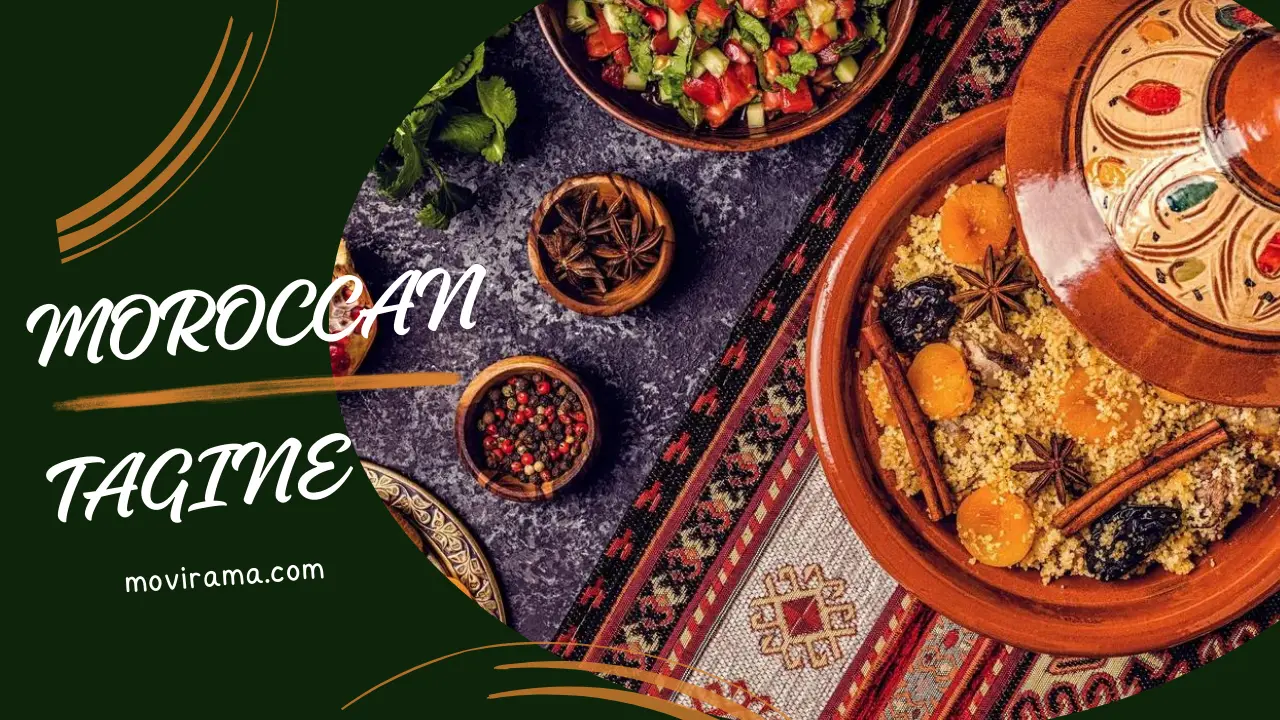
Every component in Moroccan tajine is critical, from the earthy cumin to the intense saffron. Together, they devise a culinary amusement that is both real and spellbinding.
Moroccan Tajine Cooking Vessels
The secret to creating proper Moroccan Tajine is sometimes more than just within the materials. It’s also in the pot that holds the magic. The clay tagine pot is crucial for this North African dish. Its particular design is essential for sluggish cooking.
Traditional Clay Tagine Pots
The clay tagine pot is a symbol of Moroccan cooking. Its form and design help blend steam and flavors flawlessly. These pots are made from great clay and enhance the dish’s aroma and flavor. They also spread warmth lightly, making the red meat smooth and juicy.
Modern Alternatives
If you cannot find clay tagine cookware, there are splendid alternatives. Modern tagine options like cast-iron or ceramic dishes work nicely. They can sluggishly assemble dinner just like conventional tagine pot substances. Metal tagine pots offer a contemporary twist on this Moroccan tradition.
Traditional Clay Tagine PotsModern Tagine AlternativesAuthentic Moroccan design versatile cooking options enhance aroma and flavor suitable for home kitchensSlow-cooking capabilitiesStreamlined cooking approach.
Choosing among a clay tagine pot or modern-day tagine alternatives is up to you. Your chosen pot might be an enormous part of your Moroccan tajine adventure. It will assist you in delivering the exceptional on this conventional dish.
Beef Tajine Recipes
Beef is a favorite in Moroccan cooking and is regularly the big name in flavorful Tajine dishes. There are numerous delicious options, from the conventional Kefta tagine with eggs in tomato sauce to the rich beef tagine with apricots and almonds.
The Beef and Quince Tagine with Pistachios is a beloved dish. It combines gentle pork, spices, and the sweet-tart quince. Try Strive the Slow Cooker Moroccan Beef and Green Bean Tajine for a hearty meal. It’s easy, and we should put the flavor combination together ideally.
Another traditional dish is the beef and Chickpea Tajine. It shows how versatile pork is in Moroccan cooking. With tender pork, chickpeas, and spices, it’s a dish that is both gratifying and nourishing.
Beef Tajine RecipeKey IngredientsCooking TimeKefta Tagine with Eggs in Tomato SauceGround pork, eggs, tomatoes, onions, spices1 hourBeef Tagine with Apricots and AlmondsBeef, apricots, almonds, onions, spices2 hoursBeef and Quince Tagine with PistachiosBeef, quince, pistachios, onions, spices1.Five hours low Cooker Moroccan Beef and Green Bean TajineBeef, green beans, tomatoes, onions, spices6-8 hoursBeef and Chickpea TajineBeef, chickpeas, onions, tomatoes, spices1.Five hours
These beef tajine recipes highlight how bendy beef is in Moroccan cooking. It blends properly with spices, veggies, and particular flavors, making an honest Moroccan tea.
Chicken Tajine Recipes
Chicken tajines are a staple in Moroccan delicacies. They are loved for their versatility and brief cooking time. These dishes combine chicken with Moroccan spices and herbs, developing flavors that take you to Morocco’s vibrant markets.
The Moroccan bird Tajine recipe that stands out is the Moroccan Lemon Chicken Tajine with Potatoes. This dish combines tender fowl with spices, preserved lemons, and potatoes in a flavorful broth.
Another favorite is the tagine with birds and the lemon chicken Tajine with preserved lemons and olives. This dish combines juicy fowl, salty olives, and the ideal taste of preserved lemons for a deep flavor.
The Chicken Tajine with Tomato and Onion Jam is a must-try for folks who love candy and savory. This fowl tajine recipe balances candy and delicious flavors, with the hen and tomato onion jam running together flawlessly.
These Moroccan chicken dishes are scrumptious and smooth to make. They are one-pot chicken meals, perfect for busy weeknights or special occasions.
“Moroccan cuisine is a symphony of flavors, and the fowl tajine is the conductor that orchestrates an appropriate harmony.”
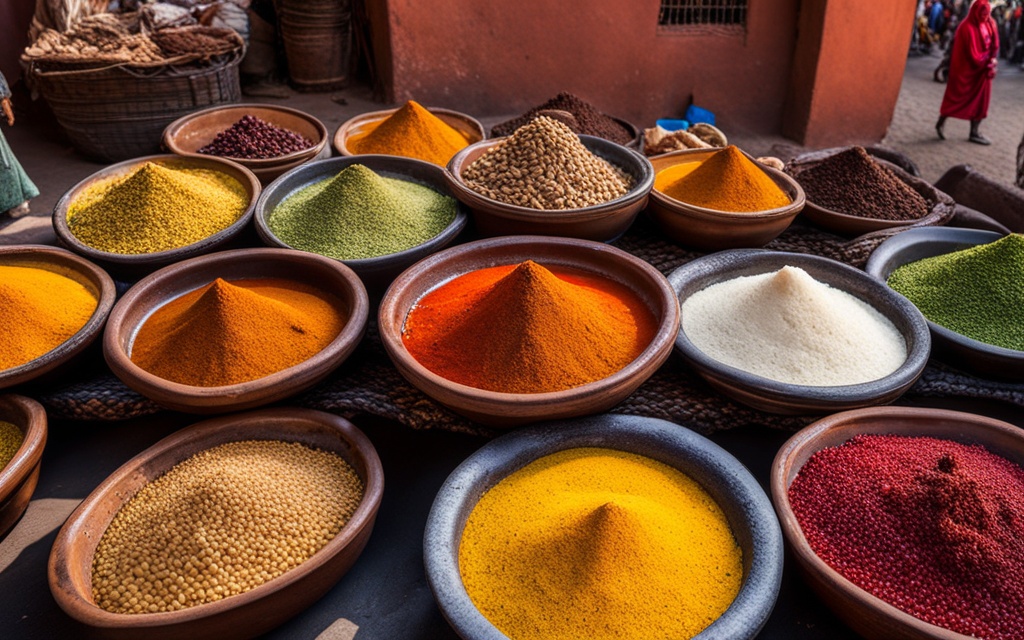
Lamb Tajine Recipes
Lamb is a favorite in Moroccan tajine recipes for its deep flavor. Although it’s frequently swapped with red meat, lamb has unique dishes that showcase its specific taste.
Braniya (lamb and eggplant tagine), lamb tagine with peas and potatoes, and Moroccan lamb and fig tagine mix gentle lamb with Moroccan spices and veggies and cease result. They are slow-cooked to perfection, supplying a real taste of Moroccan meals.
“Moroccan lamb tajine dishes are a time-honored party of America’s colorful flavors and cultural heritage.”
These lamb meals are tasty and easy to make, remarkable for any day. They fill the beef, vegetables, and couscous or rice with wealthy, fragrant flavors, making for a comforting and pleasurable dish.
If you’re new to Moroccan cooking or honestly want to attempt something new, those traditional Moroccan lamb dishes are a first-rate choice. They bring the vibrant tastes of Morocco proper into your kitchen.
Vegetarian and Fish Tajine Recipes
Moroccan Tajine is more than just meat-based dishes. It offers a wide variety of vegetarian and fish tajin recipes. These plant-based, totally Moroccan dishes highlight the colorful flavors and artistry of meatless cooking.
There are terrific vegetarian alternatives, such as Moroccan White Beans (Loubia), an Easy Recipe for Moroccan Chickpeas (Hommos), and Slow-Cooker Tajine with White Beans. These one-pot meatless meals are flavorful and enjoyable.
Seafood enthusiasts can try the Casablanca Fish Tajine and the Simple Sardine Meatball Tajine in Tomato Sauce. These dishes showcase the tasty seafood tajine options in Moroccan cooking and deliver first-class Moroccan flavors for those who like fish.
“Moroccan cuisine is a real culinary masterpiece, with its potential to convert even the satisfactory factors into a symphony of flavors.”
Moroccan Tajine welcomes all and sundry, with many vegetarian and fish tajine recipes. Home cooks can dive into the rich and varied plant-primarily-based Moroccan dishes this delicacy offers.
Serving Suggestions for Moroccan Tajine
A conventional Moroccan tajine is more than simply food; it’s a way to convey humans together. It’s all about sharing and celebrating. Serving it with conventional Moroccan bread is essential. This bread is used to scoop up the tasty stew.
Salads are also a massive part of the meal. They’re regularly made with greens and are chosen to be the primary dish. To add drama, the Tajine is served properly in the pot it was cooked in. This continues the stew, warm and full of aroma.
- Freshly baked Moroccan flatbread, like khobz or msemen, for dipping in the stew
- Moroccan salads, which include zealous (eggplant salad), taluka (grilled pepper salad), or parousia (carrot and raisin salad),
- Condiments like harissa (highly spiced chili paste), preserved lemons, and olives enhance the taste.
These traditional serving guidelines will make your tajine meal like a ride to Morocco. It’s an excellent way to share the flavors and traditions of Moroccan delicacies.
Mastering the Art of Moroccan Tajine
Discovering the flavors of Moroccan delicacies begins with creating a real tajine. It’s an adventure well worth taking, whether you are a professional chef or just beginning out. Learning to make Moroccan Tajine is a superb way to discover new tastes.
Step-via-Step Guide
Observe traditional tajine guidance techniques and proper tajine cooking approaches to make the Moroccan Tajine stand out. Start by carefully slicing onions, garlic, and unique vegetables. This step honors Morocco’s rich cultural heritage.
Then, brown the meat—like lamb, hen, or beef—to beautify the flavors. Place the veggies in a circle around the pot. Add spices, herbs, and preserved lemons for a burst of aroma.
Finally, add the liquid and allow the steam to do its magic. The tagine’s cowl traps the flavors, beginning a slow simmer. This blends the ingredients properly into a delicious whole.
With each step, you’re crafting a Moroccan Tajine that is more than just a meal. It’s a dish that tells a story, bringing Moroccan flavors to your table.
The Versatility of Moroccan Tajine
The beauty of the Moroccan Tajine is its countless versatility. It has advantageous essential substances and strategies that make it genuine. But it moreover lets you get revolutionary with exceptional proteins, veggies, and flavors.
The teapot‘s precise shape and gradual cooking make it first-rate. You can make everything, from Beef Tagine with Apricots and Almonds to Moroccan Lemon Chicken Tajine. This makes the Tajine a favorite in Moroccan houses and an image of the United States’s rich food culture.
Moroccan tajine dishes show how innovative Moroccan chefs can be. With some easy factors and the proper approach, you can try out many tajine recipes, which help you experiment and explore new flavors.
“The tajine isn’t the best dish; it’s miles a manner of life in Moroccan delicacies.”
Whether you want your Tajine savory, exceedingly spiced, or candy, there’s a recipe for every taste and event. The Tajine suggests the ability and creativity of Moroccan cooking.
Tajine DishKey IngredientsFlavor ProfileBeef Tagine with Apricots and AlmondsBeef, apricots, almonds, spicesSavory, sweet, and nutty Moroccan Lemon Chicken TajineChicken, preserved lemons, olives, spicesSweet, sour, and aromatic vegetable Tajine with ChickpeasVegetables, chickpeas, spicesEarthy, fragrant, and fulfilling.
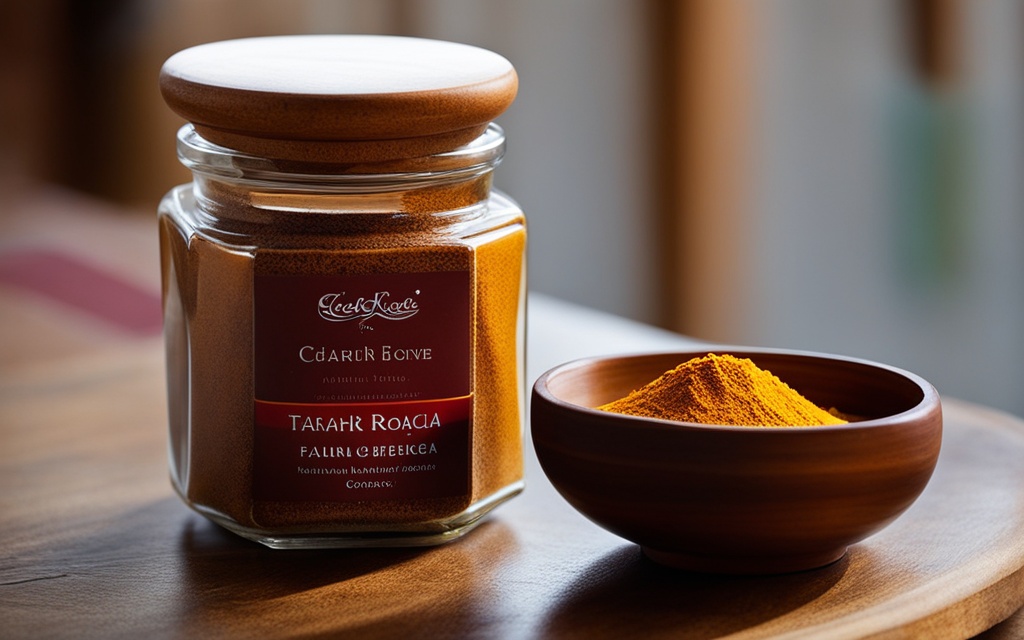
Conclusion
A conventional Moroccan Tajine is an adventure into the coronary heart of authentic Moroccan delicacies and its profound cultural importance. Every step in making it unites the degree of a memorable revel. It’s more than just a meal; it’s miles a bridge to a global in which every detail has a tale.
Learning to make Moroccan Tajine is a way to comprehend Moroccan culinary traditions. It’s about the colorful spices and the strategies passed down through generations. Whether you’re a professional or simply beginning, this dish lets you tell memories of the Moroccan way of life with every chunk.
Sharing the Tajine is more than eating collectively. It’s about keeping alive the traditions that have shaped Moroccan food. See you later. As you discover this dish, may you find satisfaction, ideas, and a deeper love for the art of Moroccan Tajine.
You may also like :
McDonald’s Chicken Big Mac Ingredients: What’s Inside
Moroccan Vegetable Harira Soup Recipe – Moroccan Cuisine
Delicious Moroccan Pastilla Recipes
Sardine Pizza Italian Cuisine: A Tasty Twist
Moroccan Couscous Recipes – Moroccan Cuisine
External link :
Wikipedia: Moroccan Tajine
FAQ
What is Moroccan Tajine, and how is it historically organized?
Moroccan Tajine is a slow-cooked stew made in a unique tagine clay pot. This pot’s shape allows for the perfect cooking of dinner meals by maintaining steam and balanced flavors, making the food mild and full of flavor.
What are the essential elements utilized in authentic Moroccan tajine recipes?
Key spices in Moroccan tea include cumin, ginger, turmeric, and saffron. Fresh herbs like coriander and parsley are also needed. Preserved lemons add a unique tangy flavor.
Can I use opportunity cookware in preference to a conventional tagine pot?
You can use other pots, such as heavy-bottomed casserole dishes or metal tagine pots. These can also make delicious Moroccan Tajine.
What are some famous protein-based Moroccan tajine recipes?
Pork, fowl, and lamb are common proteins in Moroccan Tajine. You can strive for Beef Tagine with Apricots and Almonds, Moroccan Lemon Chicken Tagine, or Lamb Tagine with Peas and Potatoes.
Are there vegetarian and fish-based tea options to be had?
Yes, there are various vegetarian and fish-based tajine dishes. Try Moroccan White Beans (Loubia), Slow Cooker Tajine with White Beans, or Casablanca Fish Tajine.
How has Moroccan Tahasne historically been served, and when are accompaniments commonly used?
Tajine is frequently served right from the cooking pot with conventional Moroccan bread, salads, and vegetable dishes.
What is the important thing about studying the artwork of Moroccan tajine cooking?
The secret is in layering components and gradual cooking. Brown the protein first, install veggies in circles and seal the flavors with the conical lid. These steps make an actual and engaging Tajine.
